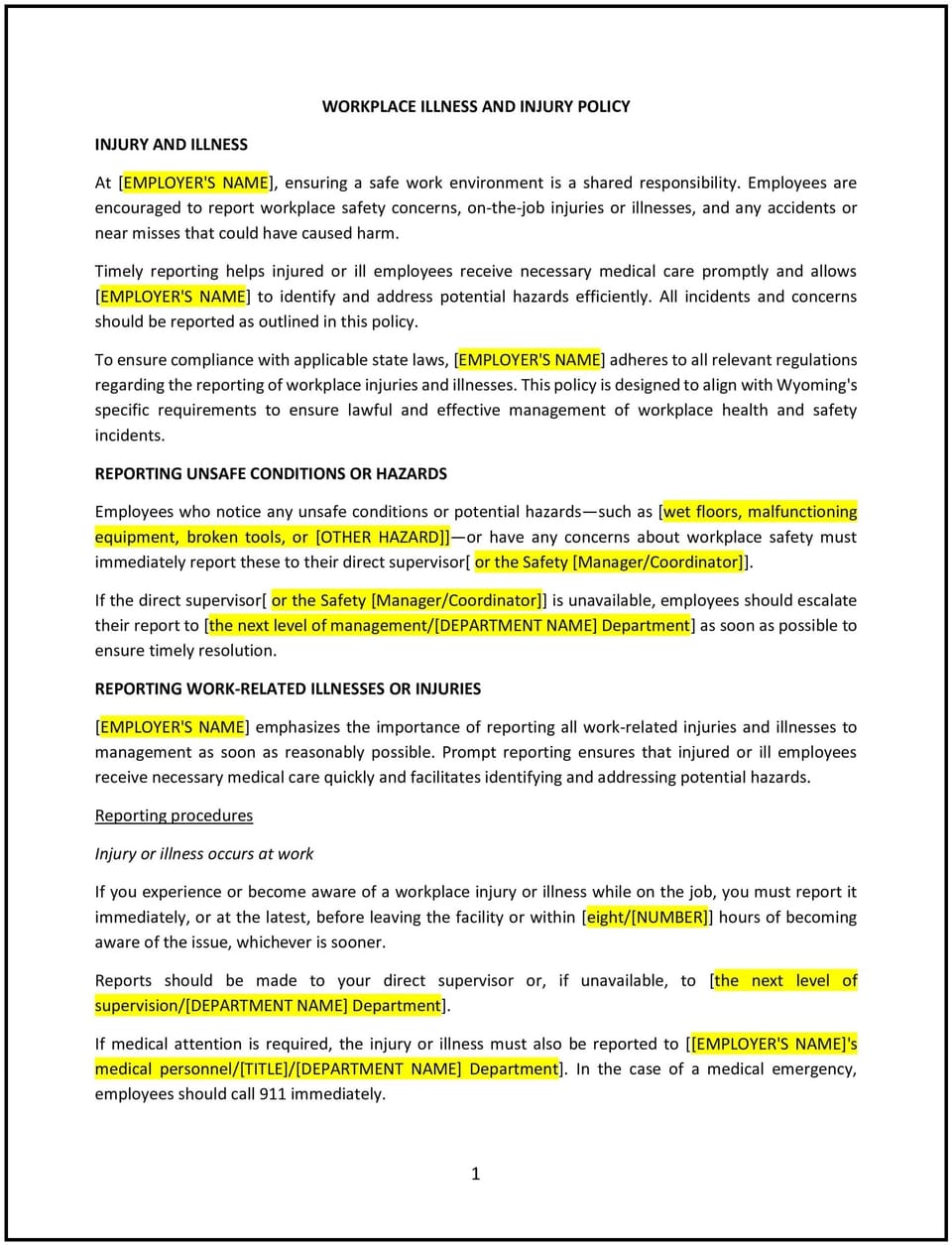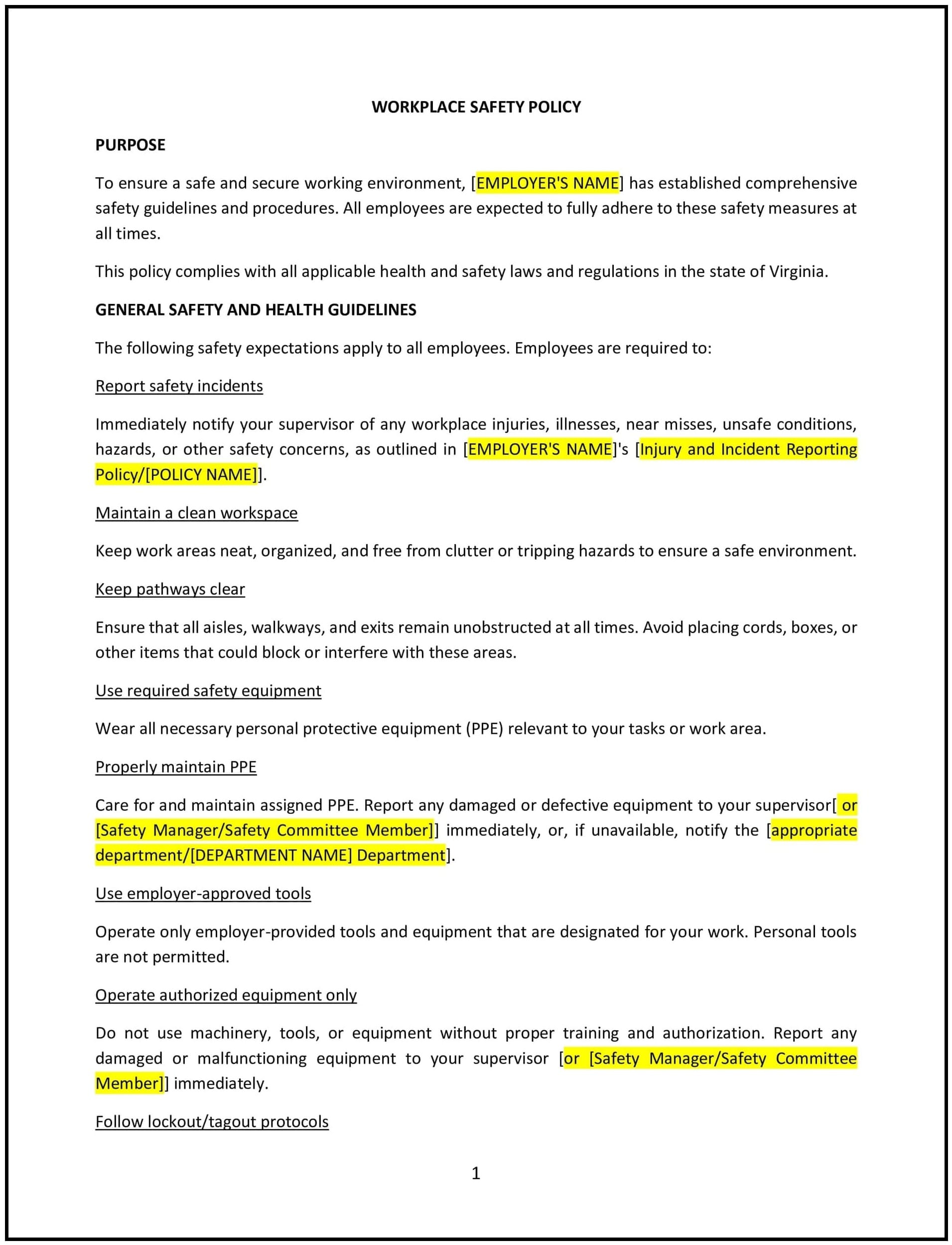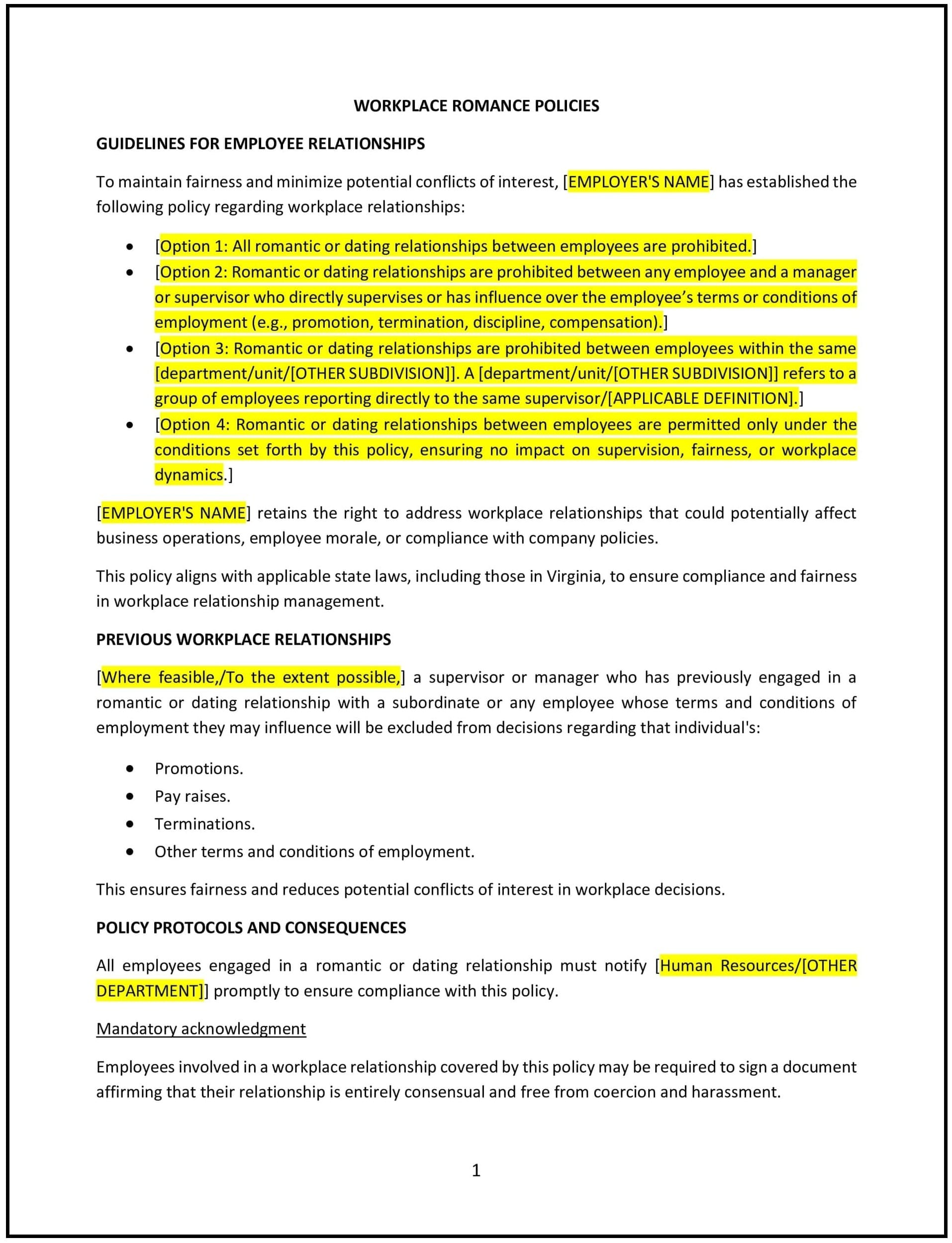Workplace illness and injury policy (Wyoming): Free template

Workplace illness and injury policy (Wyoming)
In Wyoming, a workplace illness and injury policy provides guidelines to ensure the health and safety of employees while addressing workplace-related illnesses and injuries. This policy promotes a safe work environment and supports compliance with state and federal occupational safety regulations.
This policy outlines reporting procedures, preventive measures, and responsibilities for managing workplace illnesses and injuries.
How to use this workplace illness and injury policy (Wyoming)
- Define workplace illnesses and injuries: Clearly specify what constitutes a workplace illness or injury, including accidents, occupational diseases, and exposure to hazardous substances.
- Outline reporting procedures: Provide steps for employees to report illnesses or injuries, including timelines, required documentation, and designated contacts.
- Establish response protocols: Include procedures for responding to reported incidents, such as providing first aid, contacting emergency services, and conducting investigations.
- Implement preventive measures: Detail strategies for preventing workplace illnesses and injuries, such as safety training, regular inspections, and hazard mitigation.
- Support compliance: Align the policy with Wyoming labor laws and Occupational Safety and Health Administration (OSHA) regulations to ensure adherence to legal standards.
Benefits of using a workplace illness and injury policy (Wyoming)
A workplace illness and injury policy provides several advantages for Wyoming businesses:
- Enhances safety: Reduces the risk of workplace accidents and illnesses, promoting a secure environment.
- Supports compliance: Enhances alignment with OSHA standards and Wyoming labor laws, minimizing legal risks.
- Improves morale: Demonstrates a commitment to employee health and safety, fostering trust and engagement.
- Encourages accountability: Establishes clear expectations and procedures for managing workplace incidents.
- Adapts to local needs: Reflects Wyoming’s unique industries, such as mining, agriculture, and energy, which may have specific safety considerations.
Tips for using a workplace illness and injury policy (Wyoming)
- Communicate effectively: Share the policy with employees during onboarding and ensure it is accessible for future reference.
- Provide training: Offer regular training sessions on workplace safety, emergency response, and hazard recognition.
- Monitor workplace conditions: Conduct regular inspections and assessments to identify and address potential risks.
- Document incidents: Maintain detailed records of reported illnesses and injuries to ensure transparency and facilitate compliance.
- Review periodically: Update the policy to reflect changes in laws, workplace dynamics, or industry practices.
Q: What should employees do if they experience a workplace illness or injury?
A: Employees should report the incident immediately to their supervisor or HR, providing details and any required documentation.
Q: Are all workplace injuries required to be reported?
A: Yes, all incidents should be reported to ensure proper documentation and improve compliance with OSHA regulations.
Q: How does this policy support prevention?
A: The policy includes preventive measures, such as safety training, hazard mitigation, and regular inspections, to reduce workplace risks.
Q: How does this policy align with Wyoming laws?
A: The policy supports compliance with state and federal occupational safety regulations by improving employee protection.
Q: How does this policy benefit Wyoming businesses?
A: A workplace illness and injury policy enhances safety, supports compliance, and fosters a culture of health and accountability, contributing to organizational success.
This article contains general legal information and does not contain legal advice. Cobrief is not a law firm or a substitute for an attorney or law firm. The law is complex and changes often. For legal advice, please ask a lawyer.


